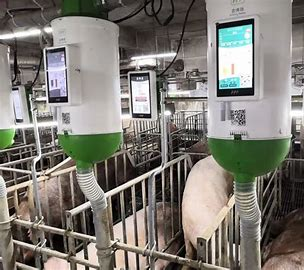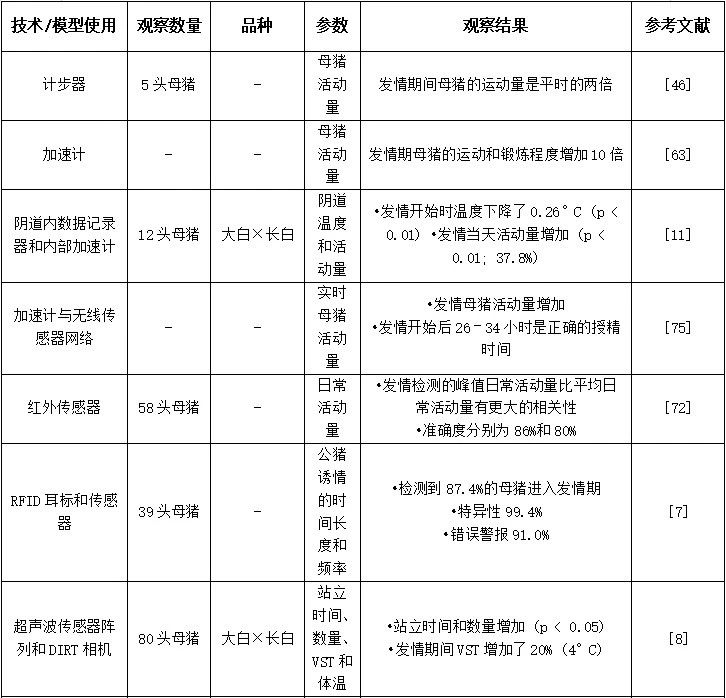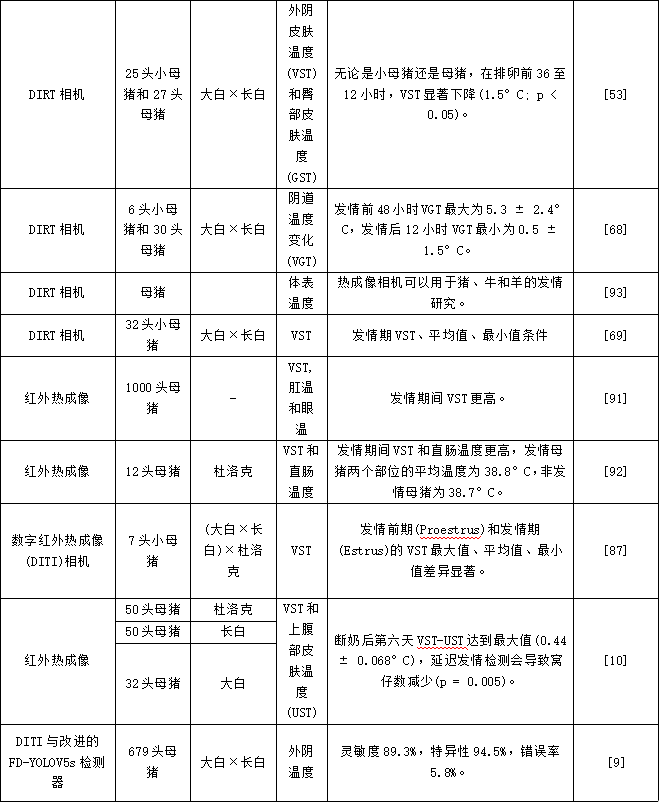
Release Date:2024.08.27
The sensors for sow estrus monitoring mainly include the following types
Accelerometers: Accelerometers are used to monitor the movement and activity level of the sow. Studies have shown that in the day before estrus, sows experience a significant increase in exercise.
Infrared Sensors: Used to measure the body temperature of the sow, especially the vulvar skin temperature (VST).Infrared Thermography can detect significant changes in the temperature of the vulva during estrus.
RFID Ear Tags: Detect estrus by monitoring the number and length of time the sow visits the male animal. This technique can automatically detect the estrus state of individual sows.
Ultrasonic Sensor Array: Used in conjunction with digital infrared thermal imaging (DIRT) to monitor the sow's posture and frequency of postural changes to identify estrus.
Depth Cameras: Depth images of the sow's vulva are obtained using machine vision technology to detect changes in vulva size during estrus.
Sound recognition sensor: Used to identify sows' calls to distinguish between estrus and non-estrus states. Deep learning techniques have had some success in this area.
Smart sensors: Sensors that combine multiple functions and can simultaneously measure different physiological and behavioral parameters to improve the accuracy of estrus detection.
The use of these sensors, combined with artificial intelligence and machine learning models, can significantly improve the accuracy and efficiency of sow estrus detection.

Application of Infrared Sensors and Infrared Thermography in the detection of estrus in sows


Application of artificial intelligence (AI) and machine learning (ML) models in estrus
In estrus detection, the application of artificial intelligence (AI) and machine learning (ML) models is mainly focused on improving the accuracy and efficiency of detection by analyzing the behavior, sound, body temperature, and physiological changes of sows. Here are some specific application examples:
1. Behavior recognition: Deep learning models, such as convolutional neural networks (CNN), are used to identify sow behavior patterns, such as standing, lying down, and other behaviors related to estrus.
2. Sound recognition: Develop AI models to analyze sow calls to distinguish special sound patterns during estrus. For example, VGG16-CNN and deep transfer learning were used to identify estrus and non-estrus calls.
3. Image analysis: Using machine vision technology combined with deep learning algorithms, such as LiDAR cameras and custom algorithms, to measure the size change of sow vulva as an indicator of estrus.
4. Posture recognition: YOLOV5s algorithm and convolutional block attention module (CBAM) were used to identify different postures of sows, such as standing, sternal decubitus and lateral decubitus, and changes in these postures were related to estrus status.
5. Body temperature monitoring: Combined with infrared thermal imaging technology, the AI model can analyze the body temperature change of sows, especially the increase of body temperature during estrus.
6. Physiological parameter monitoring: Use machine learning models to analyze physiological data collected from sensors, such as heart rate, respiratory rate, and blood pressure, which may change during estrus.
7. Intelligent system integration: Develop integrated systems, such as Smart Sow Breeding (SSB), that use AI algorithms to automatically detect the estrus behavior of sows and predict the optimal insemination time by analyzing the behavioral changes.
8. Sound event classification: Deep neural networks were used to classify sound events to identify specific sound events during sow estrus.
9. Early warning system: Develop an early warning system based on a lightweight CNN model for real-time monitoring of sow sounds in order to detect estrus in time.
10. Data fusion: Combine the information of multiple sensors and data sources and use AI model for data fusion to provide more comprehensive oestrus detection analysis.
The application of these AI and ML models not only improves the accuracy of estrus detection, but also reduces the need for manual observation, making the breeding process more automated and intelligent. As technology continues to evolve, it is likely that more innovative AI applications will be developed in the future to further improve the efficiency and welfare of sow farming.
Benefits of using technology and AI-based estrus detection systems
Technological tools and AI-based estrus detection systems bring many benefits to the pig industry. Firstly, these systems significantly improve the efficiency and accuracy of estrus detection by monitoring the behavior and physiological parameters of sows in real time, thus directly affecting reproductive efficiency, fertilization rate and litter size. Automation technology reduces the reliance on labor, reduces labor costs, and reduces the physical handling of sows, which is beneficial for improving animal welfare.
In addition, technology integration allows remote monitoring, providing convenience to farmers, and leveraging blockchain technology to ensure data privacy, enhancing trust between farmers and the industry. The prediction model of the AI system can predict the optimal breeding time based on historical data and real-time monitoring to improve the success rate of breeding. The application of deep learning architectures such as CNN and RNN improves the speed and accuracy of image processing.
User-friendly interfaces, such as mobile applications, enable farmers and practitioners to use and understand machine learning models more easily. In addition, by enhancing collaboration between researchers, technology developers, and the pig industry, pig farmers can be provided with customized technology solutions to meet their specific needs, thereby improving the farming efficiency of pig farmers and enhancing food safety globally.
In conclusion, the application of technical tools and AI in oestrus detection not only improves the accuracy of detection and the management efficiency of farms, but also promotes animal welfare and sustainable development of farms.
Challenges and factors to consider when adopting technical tools and AI-based estrus detection systems
Challenges in the adoption of technical tools and AI-based estrus detection systems include significant upfront investment costs, technical training requirements, equipment maintenance issues, the impact of environmental factors on equipment performance, model universality issues caused by individual animal differences, and the acquisition and processing of high-quality data sets. In addition, technical integration issues, compatibility and environmental adaptability of existing farms, as well as ongoing technical support and training need to be considered. These challenges need to be overcome through customized technology solutions, enhanced research and industry collaboration, and continuous technical support and training to ensure effective technology adoption and continuous improvement of farm productivity.
Summary
Prospects for precision animal husbandry (PLF) in the future, especially with technological advances and growing demand for animal products, this field is expected to expand significantly. The application of technological tools and AI in estrus detection, such as sensors and machine learning models, is key to achieving precision farming. Large commercial pig farms are more likely to adopt these technologies quickly, but small-scale farms in developing countries also need technical support to improve global food security and pig farmer efficiency.
Although there may be initial challenges, with continuous education and training, pig farmers can adapt to new technologies. In addition, increased cooperation between research, technology development, and the pig industry is essential for customized solutions. Through these measures, production efficiency can be improved, non-production days can be reduced, and ultimately the management level of the whole pig industry can be improved.
Optimistic about the role of technology in modernising the pig industry and looking forward to more innovations and improvements in the future.
If you want to learn more about the pig industry, please visit the World Swine Industry Expo website for more information.
Source:Leman China Swine Conference
If there is infringement, please contact delete.